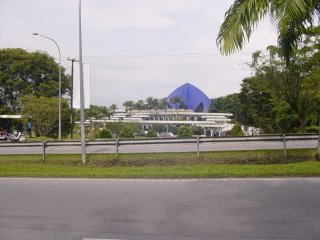The art of making prawn-paste is common amongst Bintulu residents from the early days until now. Bintulu blacan is popular and many who have tried it in their cooking will try to get more. Visitors to Bintulu will almost always leave with a small packet or two of the local ingredient, and most will only look for the homemade ones not the ones sold in the market!! This is because almost all local residents, including even some of those from outside but now residing in Bintulu, make their own blacan. Thus it is reassuring to visitors in terms of cleanliness in preparation and so on. We have been using Bintulu blacan in our cookings since.
There was only one main mosque in Bintulu town then. It was a wooden building at ground level. There were two more prayer houses or surau at some location away from the main mosque to serve residents in the locality. Hence when plans were made to build the projects and the related housing complexes, mosques were included. As Bintulu town developed, residents increased, housing estates developed more mosques were built. Bintulu main mosque was moved to a new mosque built sometime late 80s on a hillside and at an intersection on one of the main roads. I think it was in 1987 when the new mosque was commissioned. It was imposing and the locals came in droves to see the building inside-out when it was opened, the Muslims to pray and the non-Muslim to see and admire its unique architecture, quite different from other mosques they have seen. (see pictures below)
The area around the new mosque has now developed into a satellite town with banks, shops, restaurants and a shopping complex. A private hospital, a bowling alley and other facilities are coming up close by. Give it another ten years and this area will be a bustling township. As it is there is a daily traffic jam at the main intersection and some roadworks to ease the jam is ongoing.
Bintulu has really grown from the days of only 12 kilometers of road to a township. I am not surprised if in years to come, and not too far away, Bintulu can claim city status. I hope the authorities will stick to their proper development plans, learn and avoid mistakes made by other cities around the country.
MKI Ramblings Unlimited,
Bintulu




No comments:
Post a Comment